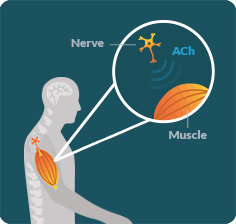Botulinum Toxin Injection for Equinus Correction in CP
A day in the lifeWhat is Cerebral Palsy (CP)?
Cerebral palsy (CP) is a condition that manifests with symptoms such as spasticity, intellectual and motor disability, and epilepsy, among others. It is incurable but can be managed up to a certain extent. Botulinum toxin can provide relief against spasticity in these patients.
The etiolgy of CP varies and goes from pre-natal factors, such as infections or medications during pregnancy, to peri-natal and post-natal factors like premature birth and traumatic brain injury.
On Wednesday, we practice at the physical rehab clinic, where we often see cases of children affected by CP.
Today, one of them (whom I will call Igor) had a botulinum toxin injection into both the gastrocnemii (calves muscles). Botulinum toxin works by interfering with the normal neuromuscular physiology, which involves the release of a molecule called Acetalcholine (ACh) into the synaptic cleft. Once the post-synaptic nicotinic ACh receptor (nAChR) picks up this molecule, it opens special protein channels called Na+ channels. This allows sodium to flow in, depolarizing the muscular cells and causing contraction. ACh will be, then, degraded by an enzyme called ACh-esterase.

Well, botulinum toxin stops all that by inhibiting the release of ACh. And without out little “contraction friendly” molecule, we cannot achieve musclular contraction. In other words, botulinum toxin causes flaccid paralysis (you can read more about this mechanism and how certain drugs interfere with it in the article TIVA: a friendly user’s guide).
Paralysis? That does not sound good!
Don’t be afraid of the word “paralysis”. In this specific context, it is a really good thing. Children affected by CP suffer from spasticity (or spastic palsy). Botulinum toxin can act locally on specific muscles, causing their relaxation. It can be very beneficial for this population of patients.
In cerebral palsy (CP), spasticity becomes particularly evident when the child attempts to dorsiflex the foot. Typically, the foot is maintained in a plantar flexed position (equinus) due to the overactivity of both gastrocnemius muscles. This treatment aims at relaxing these muscles, thus enabling the child to improve the ROM (Range Of Movement) of both ankles, which can now dorsiflex as well. Sounds complex, and it probably is. But this is what we unconsciously do thousands of times every single day when we walk.

Apart from a few side effects and contraindications, botulinum toxin injections are fairly safe and can achieve pleasant results, although only temporary. The effects of the toxin diminish after some time, typically around 12 months. While it can potentially be reapplied, this remains a short-term treatment for muscle rigidity in cerebral palsy.
In conclusion
Learning about how treatments such as botulinum toxin injections work can help us understand the creative ways in which cerebral palsy is managed and can enhance the well-being of those with the condition. If you or someone you know is facing cerebral palsy or other neurological disorders, do not hesitate to consult with experts in the healthcare field focused on this area. Each effort towards improving management and treatment choices can truly impact the lives of individuals affected by CP.
Michele Ritucci, MD
Read more about botulinum toxin in cerebral palsy here.